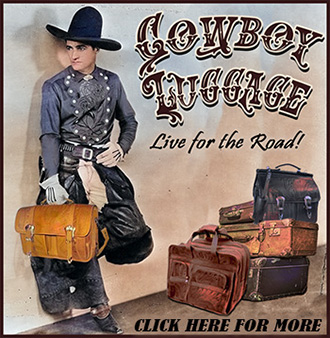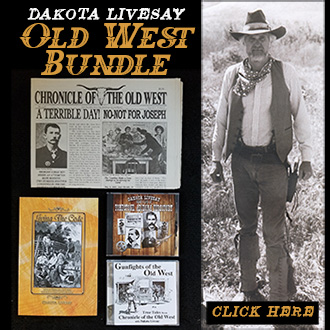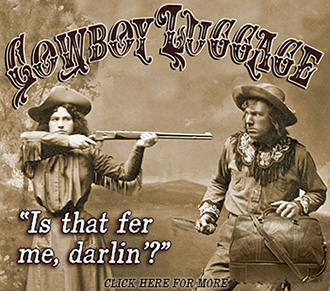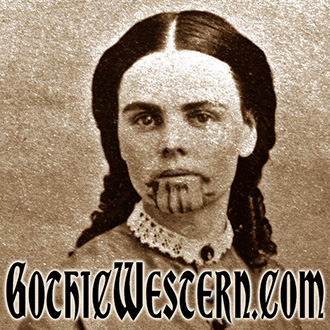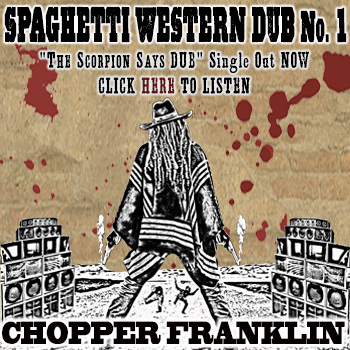SEMINOLE-NEGROES
 On April 8, 1875 four soldiers encountered 30 Comanche. Three of those four soldiers received the Congressional Metal of Honor. This was but one escapade in the life of a most unusual group of soldiers.
On April 8, 1875 four soldiers encountered 30 Comanche. Three of those four soldiers received the Congressional Metal of Honor. This was but one escapade in the life of a most unusual group of soldiers.
During the 1870’s there was a small group of men who guarded the Texas–Mexico border against Comanche Indians. These men were the Seminole-Negroes. They were runaway slaves who had gone to Florida and lived with the Seminole Indians. When the Seminole were chased west, the black families went with them.
In 1870, looking for extra help in fighting the marauding Comanche, the Seminole-Negroes were hired as a special unit to track down the Comanche Indians. Although the Seminole-Negroes were a rag-tag looking bunch with a combination of military and Indian attire, which even included war bonnets, they had the ability to follow trails that were weeks old and live on nothing but rattlesnakes.
The commander of this group was a white Lieutenant by the name of John Bullis. Lieutenant Bullis had the respect of the Seminole-Negroes, because he was willing to live and fight right along side of his men. One time while on a patrol Lieutenant Bullis and three of his enlisted men encountered some 30 Comanche. Being vastly outnumbered, the soldiers retreated. Unfortunately, in the process Lieutenant Bullis was captured. Not willing to leave their commander behind; the men changed into the midst of the Comanche, rescuing Lieutenant Bullis. Each enlisted man received the Congressional Metal of Honor.
For their service, the government had promised the Seminole-Negroes land, but, mysteriously, when it came time to pay up, the War Department had run out of land. But, living up to their commitment, and ever hopeful, they stayed on until their job was done.
Incidentally, as an indication of their skill as scouts and fighters, during the service of the Seminole-Negroes, not one was ever killed or injured in battle.
SEQUOHAH
The subject of today’s story was considered an ingenious natural mechanic…and his invention changed the life of his people forever.
Sequohah, b orn in 1760 in Tennessee, grew up among his mother’s people, the Cherokee. He became a metal craftsman, making beautiful silver jewelry. As a young man he joined the Cherokee volunteers who joined Andrew Jackson in the War of 1812. While with the American soldiers, he became intrigued with what he called “talking leaves,” or words on paper that somehow recorded human speech. Although Sequohah had no formal education, he somehow comprehended the basic nature of the symbolic representation of sounds.
orn in 1760 in Tennessee, grew up among his mother’s people, the Cherokee. He became a metal craftsman, making beautiful silver jewelry. As a young man he joined the Cherokee volunteers who joined Andrew Jackson in the War of 1812. While with the American soldiers, he became intrigued with what he called “talking leaves,” or words on paper that somehow recorded human speech. Although Sequohah had no formal education, he somehow comprehended the basic nature of the symbolic representation of sounds.
In 1809 he began working on a Cherokee language. At first he tried picture symbols, but soon found them to be impractical. Then he started looking at English, Greek and Hebrew. He finally developed 86 characters that would express the various sounds in the Cherokee language. It was so simple in its concept that it could be mastered in less than a week.
In 1821 he submitted his new written language to the Cherokee leaders. As a demonstration Sequohah wrote a message to his six-year-old daughter. She read the message and responded in kind. The tribal council immediately adopted the system. And Cherokee of all ages started learning the written language.
The Cherokee were divided into two groups, Sequohah’s in Georgia and Tennessee, and the western Cherokee in Oklahoma. In 1822 Sequohah went to Oklahoma, and taught the alphabet to the Cherokee there.
Finally, on February 21, 1828 the first printing press with Cherokee type arrived in Georgia. Within months, the first Indian language newspaper appeared. It was called the Cherokee Phoenix.
Sequohah later went to Mexico to teach Cherokee there the language. While in Mexico he became ill with dysentery, and died.
Great monuments to the man who developed the Cherokee alphabet stand today along the northern California coast. They are the giant redwood trees called the Sequoia.
FRONTIER PHARMACY
From:
Current Newspaper, Carlsbad, New Mexico
February 13, 1896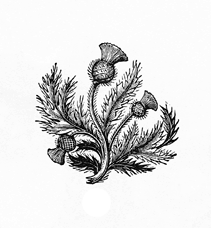
Catnip – The leaves can be made into a tea and fed to babies with colic.
Chicory – Young leaves can be eaten as a spring green and the roots dried and roasted as a coffee substitute.
Dandelion – The leaves and small flower buds are a sought-after spring green. Dried and roasted roots make a coffee substitute. Can also be used as a remedy for dropsy.
Goldenrod – The flowers can be used for dying yarn. The leaves can be made into tea for nausea.
Milkweed – The “fluff” from this plant makes a great stuffing for mattresses and pillows. The leaves can be used to make chair seats; shoots, roots, and young lower buds are all edible.
Red Raspberry – The leaves can be dried and made into a tea for dysentery, to ease childbirth pains and as a wash for sores.
Rose Hips – Tea made from these berries can be used as a treatment for scurvy.
Sassafras – The inner bark of the roots can be boiled in water for a spring tonic and as a beverage with meals.
Willow – The inner bark can be used to make tea for reducing fever.
PEARL GREY
Pearl Grey was born on January 31, 1872. He was a talented baseball player, and played for the University of Pennsylvania while getting a degree in dentistry. Pearl was scheduled to follow in his father’s footsteps as a dentist. Looking for excitement, he played some semi-pro baseball. But that didn’t satisfy his need.
Incidentally, Pearl never liked his first name, which was thought by everyone to be a woman’s name. So he decided to change it to his mother’s maiden name, Zane.
Pearl, or as we know him now, Zane Grey never wanted to be a dentist. He wanted to be a writer. His first novel was a forgettable one about one of his ancestors. But his life was changed when in 1908 he met Colonel C. J. “Buffalo” Jones. Buffalo Jones convinced Zane to write his biography. So Zane could get a feel of the atmosphere of Buffalo Jones’ life, Jones took the 36-year-old writer out west.
While out west, Zane Grey experienced the excitement of the west, like roping mountain lions. Grey was fascinated with the people and landscape. The biography of Jones, “The Last of the Plainsmen” was completed that same year.
Although it got little attention, Zane Grey had found his calling.
About four years later Zane Grey published a novel that gained him lasting fame…Riders of the Purple Sage. This novel was about a weak easterner who became a man because of his exposure to the culture of the West. It was a theme that Zane would repeat in the almost 80 books he published during a life that lasted 64 years.
GOLD DISCOVERED IN CALIFORNIA
On January 24, 184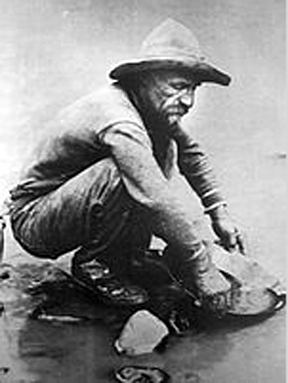 8, John Marshall and John Sutter discovered gold at a sawmill construction site near Sacramento, California.
8, John Marshall and John Sutter discovered gold at a sawmill construction site near Sacramento, California.
When James Marshall told Sutter of the gold discovery, his first thought was not of the potential of vast wealth, but of how it would adversely affect an empire he was developing called New Switzerland.
Even though Sutter owned 50,000 acres of land, the mill was on public land. At that time, California was in the process of being transferred from Mexican to U.S. ownership. With no government authority, Sutter and Marshall exchanged clothing and other trinkets with local Indians for a lease of land surrounding the site. Even though they tried to keep the discovery a secret, in no time the whole world knew about it.
As men were panning for gold, Marshall was busy cutting lumber, and Sutter was tending his crops. Within a year, both of their businesses failed. Without a clear title, James Marshal was eventually run off the land where the mill was located.
John Sutter’s 50,000 acres came from two Spanish land grants. One was declared void, and squatters took over the other.
Eventually, both men tried mining for gold. But they failed. John Sutter died penniless in 1880…And James Marshall did the same in 1885.
Although Sutter and Marshall, the discoverers of gold, never saw a profit from the discovery, during the first 25 years following the discovery, over 978 million dollars worth of gold was taken from the area of Sutter’s mill.
OLD WEST ROCK STAR
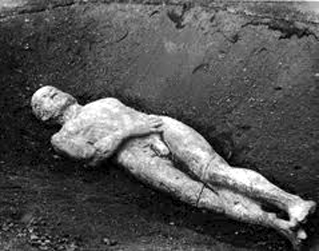 Do you think that rock stars are a creation of modern history? Not necessarily so. Back in 1877, the Old West had a rock star.
Do you think that rock stars are a creation of modern history? Not necessarily so. Back in 1877, the Old West had a rock star.
It was 1877, and Darwin’s theory of evolution was a hot topic of conversation. To support his theory, in March of that year, a giant petrified man was found in Colorado, along with a petrified turtle and fish. It was announced by its finders that, “We have found the missing link which Darwin claims connects mankind with the beast creation. It is certainly the petrified body of a man with a tail.”
It was named “The Solid Muldoon.” The Solid Muldoon made a tour of the United States ending up in New York. People stood in line to pay money to see this “missing link.” Although Darwin himself, only seeing pictures, felt the whole thing might be an imposture; others said it was definite proof of evolution.
It was February 15, 1878…less than a year after the Solid Muldoon was discovered, that one of the members of the exhibition company, feeling he wasn’t being paid enough, spilled the beans about the missing link.
It seems that back in 1877 two men met to see if they could make some money in connection with the excitement over Darwin’s theory of evolution. One of the men was George W. Hull. Eight years earlier Hull had made money by creating and exhibiting a Cardiff giant he had made with 2,900 pounds of cement. The other was a P. T. Barnum, the great showman and promoter. Hull took some cement and cast the Solid Muldoon along with the turtle and fish. Then they had it hid in the Colorado wilderness, so they could later find it.
With the exposure of the Solid Muldoon as only a piece of rock, this star of the Old West faded. But P. T. Barnum continued showing us just how gullible we really are.
EMPEROR OF THE UNITED STATES
 20,000 TURN OUT FOR EMPEROR NORTON FUNERAL
20,000 TURN OUT FOR EMPEROR NORTON FUNERAL
January 10, 1880, Call, San Francisco, California – Emperor Norton I, first citizen of San Francisco, was laid to rest today at the Masonic Cemetery in a service that saw a royal cortege more than two miles long. An estimated 20,000 citizens came to say farewell to this self-appointed supreme leader of the United States of America. He was laid to rest in a black robe with a white starched shirt and black bow tie.
He died shortly after collapsing on California Street near Grant on the evening of January 8th on his way to a debate at the Academy of Science. Businessman William Proll was first to arrive to his aid, and knowing him to be a temperate man, believed the Emperor was distressed. A police officer ordered a carriage to convey him to the hospital. Alas, by the time a hack arrived, Emperor Norton had departed this life.
Joshua Abraham Norton, born London, England on February 14th, 1819, came to this city in 1849 from South Africa. Although he arrived with a $40,000 fortune, a failed attempt to corner this city’s rice market in 1854 separated him from his money. His venture, the result of a rice famine in China, caused the price of rice to skyrocket from four cents to 37 cents a pound. Norton bought the entire cargo of the first ship of rice arriving from Peru for 12 cents a pound, little realizing that more Peruvian rice-laden ships were due to arrive the following day. The glut of rice to this city dropped the price to three cents a pound. Norton, gold-seeker turned rice-seeker, was financially ruined.
Penniless but not without temerity, he arose again and on September 17, 1859, he proclaimed himself Norton I, Emperor of the United States in a declaration concluding:
“In virtue of the authority thereby in me vested, do hereby order and direct the representatives of the different Sates of the Union to assemble in Musical Hall, of this city, on the 1st day of February next, then and there to make such alterations in the existing laws of the Union as may ameliorate the evils under which the country is laboring, and thereby cause confidence to exist, both at home and abroad, in our stability and integrity.”
Many citizens of San Francisco were amused by the Emperor’s Decrees, but many citizens saw him as an honest and noble man, and above all, a diviner with an eye to the future. Under the Emperor’s imperial hand, proclamations were published, most notably: dissolving the Union (July 16, 1860), barring Congress from meeting (October 1, 1860), abolishing both the Democratic and Republican parties (August 12, 1869), that a suspension bridge be built between San Francisco and Oakland Point (September 21, 1872), and that a Bible Convention be held “for the purpose of eliminating all doubtful passages contained in the present printed edition of the Bible, and that measures be adopted toward the obliteration of all religious sects and the establishment of a Universal Religion,” (January 2, 1873). Perhaps most far-reaching was his call upon the leaders of the world to form a League of Nations where disputes could be resolved peacefully. His letters to Abraham Lincoln and Queen Victoria were seriously deliberated.
With the completion of the transcontinental railroad, tourist arrived daily to this city, and Emperor Norton offered them fine sights worthy of their trip. San Franciscans knew Emperor Norton to be a temperate man, and although he had no visible means of income, he issued paper notes in denominations of fifty-cents to ten dollars with which to obligingly pay his bills, signing and dating each to make the transaction official. He had been known to disperse riots against the city’s population of Chinese by reciting the Lord’s Prayer before the aggressors.
This city will miss him walking with his dog, returning the salute of police officers, ordering the cleanliness of our streets, tempering foul language, and in general, making San Francisco a more royal city for his presence.
STUDEBAKERS
If you go to a classic car show, you’ll see a number of Studebaker cars and trucks. But, did you know that the  Studebaker family started making vehicles back in 1852?
Studebaker family started making vehicles back in 1852?
Here’s the story. The Studebaker family was known for being great blacksmiths. Looking to take advantage of the westward movement, brothers Henry, Clem and John started the “H & C Studebaker Company” to make their version of a Conestoga wagon. They started with $68 in capital. After a year, they had sold two wagons.
Realizing they needed more capital to be able to buy materials in quantity, brother John agreed to go to California and get some capital in the gold fields. When he got to what is now Placerville, he realized he could generate more money by making wheelbarrows for the gold miners than mining gold.
John did well. In a couple of years, he had saved $8,000. On his way home, John picked up a copy of the great promoter, P. T. Barnum’s book The Art of Money Making. When John got back to Indiana, he was totally excited with the possibilities of making a fortune.
By December 31, 1860 the Studebaker brothers, John and Clem…Henry had decided to leave the business and become a farmer…had 14 employees and a successful business.
During the Civil War, the Studebakers made supply wagons and ambulances for the Union Army. The two brothers were so busy that they grew beards to save time normally used for shaving.
It became an annual ritual to tally the books at the end of each year. Following the Civil War, on December 31, 1867, John tallied the assets. That year they had profits of $223,269.
WESTERN TV
If you’re a fan of TV westerns, below is a link to a TV western reunion that took place in 1978.
It’s a video gathering of all the western TV and movie greats who were alive at that time hoste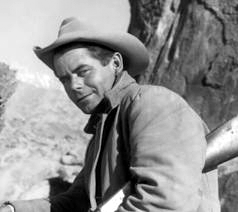 d by Glenn Ford. They gathered in a saloon, and discussed the era when there were more westerns on TV than any other classification.
d by Glenn Ford. They gathered in a saloon, and discussed the era when there were more westerns on TV than any other classification.
Be prepared to spend 50 minutes of nostalgia.
http://www.youtube.com/watch?v=7NtMAwx7jF8
 Back in 1835 there was an area of North America that, like the United States some fifty plus years earlier wanted to become independent of their mother country. On October 17, the people of that rebelling area approved the forming of a group of armed and mounted men whose duty was to range the borders and protect them. Some 175 years later that organization is still in existence and going as strong as ever.
Back in 1835 there was an area of North America that, like the United States some fifty plus years earlier wanted to become independent of their mother country. On October 17, the people of that rebelling area approved the forming of a group of armed and mounted men whose duty was to range the borders and protect them. Some 175 years later that organization is still in existence and going as strong as ever.
That area of North America seeking independence? It was Texas. That group of armed and mounted men? The Texas Rangers.
In 1835 Texas comprised of isolated pockets of frontier settlers. And Texas leaders needed someone to “range” the frontier and protect the borders from Santa Ana’s soldiers as well as hostile Indians within the territory. And that’s exactly what the Texas Rangers did.
Then, a year later when Texas got its independence, it was decided to upgrade this semi-official force into the primary law enforcement authority.
Although they were created by the Texas government, they were an irregular group of civilians who provided their own horses and guns.
They were given considerable independence, carrying out the duties that would normally be done by the army…such as fighting Indians, and law enforcement agencies…tracking down cattle thieves, train and stage robbers and murderers.
As Texas entered into the 20th century the Texas Rangers were still very much an independent agency. But, they were receiving more and more criticism about their using excessive violence and ignoring the finer points of the law. So, in the 1930’s, the state got control of the Rangers, making them a modern and professional law organization.
FIRST EXPRESS SERVICE
If you wanted to send a valuable package in the early 1800’s, your only option was to find an honest looking person going there, and then ask them to carry your package. But all that changed on October 10, 1839.
Sending any type of valuable package in the early 1800’s was a very risky process. First you would try t o persuade a stagecoach driver or steamboat captain to take it for you. If they didn’t want the responsibility, you would then look for a passenger with an honest looking face to take it. And sometimes that “honest person” and your package would disappear.
o persuade a stagecoach driver or steamboat captain to take it for you. If they didn’t want the responsibility, you would then look for a passenger with an honest looking face to take it. And sometimes that “honest person” and your package would disappear.
But on October 10, 1839, a former railroad conductor by the name of William Harnden came up with what could be called the first express company. He started out modestly with deliveries between Boston and New York. Most of the items carried were business documents, bank drafts, currency and newspapers.
The fee was a few cents to a few dollars, depending not on the size of the document, but its value. At first William Harnden made the deliveries himself, carrying the items in a carpetbag.
By 1841, just two years later, he had offices in Philadelphia, Albany, London and Paris. An employee by the name of Henry Wells suggested that instead of expanding to the east, he should expand to the west.
Harnden looked to the west and saw nothing but wilderness and Indians and routes that were hardly traveled, as opposed to messengers traveling by steamship or stagecoach over populated areas. So William Harnden told Henry Wells to “do it on your own account.”
William Harnden died at the age of 33, the result of tuberculosis and overwork. And he was not able to see what happened when Henry Wells took his advice, and along with a partner named William G. Fargo started a company with a name that’s familiar even today, called Wells-Fargo.
ARIZONA COWBOY POETS GATHERING
We’re getting re ady to head over to the Arizona Cowboy Poets Gathering in Prescott, AZ.
ady to head over to the Arizona Cowboy Poets Gathering in Prescott, AZ.
We’ll be there Friday and Saturday enjoying the music and poetry, as well as having conversations with the entertainers and attendees for our weekly radio show.
I would highly recommend this event. Hope to see you there.
Their web site is: http://www.ycpac.com/portfolio/arizona-cowboy-poets-gathering/
TOM CUSTER
It is said of George Armstrong Custer that his officers fell into two categories: Those who hated him and those who were related to him… and five of them were related. This story is about one of those relations… his brother Tom.
Tom Custer was five years younger than George, and he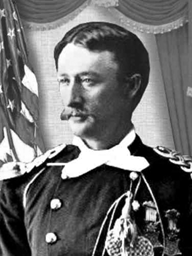 spent his life in the shadow of his older brother. Although he wasn’t as flamboyant as George, Tom was his own man. For instance, unlike his brother, Tom liked his liquor.
spent his life in the shadow of his older brother. Although he wasn’t as flamboyant as George, Tom was his own man. For instance, unlike his brother, Tom liked his liquor.
In 1870, while camped with the Seventh Cavalry near Hays City, Kansas, where at the time Wild Bill Hickok was the marshal; Tom supposedly got drunk, and was chased out of town by Hickok. Tom vowed revenge. A short time later Hickok had a shootout with three troopers from the Seventh. It’s though that Tom Custer had something to do with the affair.
In 1874 Tom led an expedition into the Yellowstone River area and arrested a chief by the name of Rain-in-the-Face. Rain-in-the-Face later escaped, vowing to someday cut out Tom’s heart. Quite possibly Rain-in-the-Face got his wish for Toms body was so mutilated in the Little Big Horn battle that his initials, T. W. C., tattooed on his arm was the means of identification.
Although Tom never got the fame of his older brother, during the Civil War Tom’s exploits resulted in his accomplishing something no other soldier had done before him and few have accomplished since…Tom won two Congressional Medals of Honor…Tom Custer has been compared to Alvin York of World War I and Audie Murphy of World War II.
ZWING HUNT
Zwing Hunt was a minor character in the Old West. But his story is one that has been repeated many times over. Zwing was born in 1858 in Texas. He grew up to be an honest young man. According to one report he was generous to a fault and brave.  It was also said that he was a child of circumstances and a creature of excitement.
It was also said that he was a child of circumstances and a creature of excitement.
At the age of 22 he came to Tombstone, Arizona where he palled up with a ne’er-do-well named Billy Grounds. With the excitement of Tombstone’s low life tugging at his shirttails, he started hanging around the Clanton Gang that comprised the likes of Curly Bill Brocius and Johnnie Ringo.
After pulling a job or two with the Clantons, Zwing and his friend Billy Grounds decided they could do the same on their own. One evening in the early spring of 1882 the two of them entered the Tombstone Mill & Mining Company with robbery on their minds. In the ensuing excitement they killed a man.
A warrant was issued for their arrest; a posse was assembled; and the chase was on. In a shootout Billy Grounds and a member of the posse were killed, and Zwing Hunt was shot in the lung.
Zwing was taken to the Tombstone hospital where about 3 weeks later, his brother smuggled him out. This is where the story gets interesting. Supposedly, on May 31, 1882 while Zwing and his brother were hiding out, a band of Indians attacked them and killed Zwing. After chasing off the Indians, his brother supposedly buried Zwing in the Chiricahua Mountains. But, the Zwing Hunt legend also says that he wasn’t really killed; that the prodigal son returned to Texas to live a full life.
WIND WAGON
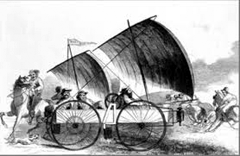 In the 1860’s when a pioneer family headed out west, they usually did it in a covered wagon pulled by horses or oxen. One man, Samuel Peppard, didn’t have horses or oxen, but that didn’t stop him.
In the 1860’s when a pioneer family headed out west, they usually did it in a covered wagon pulled by horses or oxen. One man, Samuel Peppard, didn’t have horses or oxen, but that didn’t stop him.
On May 9, 1860 Samuel Peppard headed out west. This was during the time of the Pike’s Peak gold rush, and Samuel wanted to do some gold prospecting. He didn’t have any horses or oxen, and he didn’t want the obligation and expense of taking care of them.
But, he did live in the Kansas Territory. And anyone who has been through Kansas knows it’s pretty flat, and the wind tends to blow rather strongly. Being a creative person, Peppard decided to take advantage of the resources at hand, and so he designed the world’s first wind-sailor. Built like a small boat, it was about 8’ long and 3’ wide, and it had four large wagon wheels. Weighing about 350 pounds, it was designed to hold 4 people.
The first time out, the wind blew the wagon over. So Peppard reconstructed the sails, rudder and brakes. By now everyone called it “Peppard’s Folly”.
With three of his friends aboard, Peppard raised the sails, and “Peppard’s Folly” took off across the prairie. Depending on the strength of the wind, it got up to 30 miles per hour.
On days when there was no wind, Peppard and his three friends just sat back, smoked a cigarette, and swapped stories.
They traveled about 500 miles before a dust devil came along and turned the wind wagon into a pile of rubble.
Peppard and his friends finally made it to Denver, but like most seekers of gold, they didn’t find anything.
Peppard later went back to Kansas, and lived to the ripe old age of 82. But he was always known as the guy who sailed to Denver.
BILLY THE KID PARDON
At one time outlaw Billy the Kid came close to becoming an honest man. But things didn’t work out the way he had hoped.
The year w as 1879. The Lincoln County War was all but over. Lew Wallace, the governor of New Mexico, was in Lincoln County, taking a personal interest in getting to the bottom of the conflict.
as 1879. The Lincoln County War was all but over. Lew Wallace, the governor of New Mexico, was in Lincoln County, taking a personal interest in getting to the bottom of the conflict.
Houston Chapman, an attorney had just been murdered, and Governor Wallace wanted his killers. Although it was generally known who the killers were, someone had to testify against them in court. The Governor knew that William Bonney, later to be known as Billy the Kid, was that man, because Bonny had already written him saying he would testify in exchange for immunity. So, on March 17 Bonney and Governor Wallace met. It was agreed there would be a mock arrest, and after the testimony, Wallace would give Bonney a pardon.
But, before the arrest, the killers of Chapman escaped. However, Governor Wallace assured Bonney that the deal was still on. So, on March 21, as per the arrangement, Bonney surrendered to the Lincoln County Sheriff. In April the two accused murderers were captured again. A grand jury was called. But before Bonney could testify, he was taken away to Dona Ana County to stand trial for the murder of Sheriff William Brady, who was killed a year earlier. Bonney and two others were indicted for murder. Although Bonney was still getting assurances that his deal was still in place, he sensed it was turning sour. But he still went through with his part of the agreement by testifying against his friends.
Now feeling he had no bargaining power, and that things were still going bad, in May, William Bonney decided to give up trying to go straight, escaped his captors, went back to cattle rustling, and became Billy the Kid.
LIVING THE CODE
Since 2004 I’ve been intrigued with a code of ethics that was developed during the 300 years the United States had a frontier. Through  Chronicle of the Old West, our publication, and our weekly radio show I’ve promoted seven precepts that came from that code of ethics.
Chronicle of the Old West, our publication, and our weekly radio show I’ve promoted seven precepts that came from that code of ethics.
Those seven precepts have now become a book. It’s called “Living The Code.” This book came from a lifetime of conversations and the written words of men and women of principal, theologians, historians and educators.
I truly believe these seven precepts have the ability to change a person’s life.
Incidentally, Living The Code has a five star rating on Amazon.com. For more information you can go to www.LivingTheCode.com.
LUKE SHORT
Growing up in Texas, Luke Short became a cowboy. At about 5’ 5” and no more than 150 pounds, he found the cow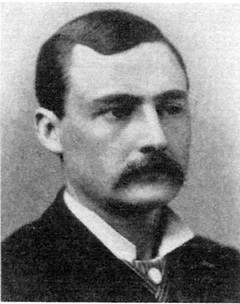 boy life hard work and little pay, so he became a merchant in Nebraska. Immediately Luke discovered there wasn’t money in selling general merchandise to the settlers, so he decided to sell bootleg whiskey to the Indians.
boy life hard work and little pay, so he became a merchant in Nebraska. Immediately Luke discovered there wasn’t money in selling general merchandise to the settlers, so he decided to sell bootleg whiskey to the Indians.
The army caught Luke, and put him in jail. Escaping jail, Luke headed to Leadville, Colorado where he discovered a way to work with his hands that wasn’t strenuous or illegal. It was dealing cards.
A Leadville bully thought Short should give him money for gambling. Short chose to give him led instead. After the killing, Short headed over to Dodge City where he became friends with Bat Masterson and Wyatt Earp. When Wyatt went to Tombstone, Luke followed him.
February 25, 1881 Luke Short ran into another bully named Charlie Storms. A drunk Charlie Storms and Luke Short had a gambling disagreement. Storms pulled his gun and challenged Short to a gunfight. Short pulled his gun and shot Storms twice…once in the heart and once in the head.
Although it was self-defense, Charlie Storms had a number of friends, and Luke didn’t want to spend his life watching his back, so he took the next train out of Tombstone. Eight months later the shootout at the O.K. Corral took place.
It is generally agreed that if Luke Short were still in Tombstone at the time of the O.K. Corral shootout, today we would be talking about the Earp brothers, Doc Holliday and Luke Short in the same breath.
MESA VERDE
On December 18, 1888, the fantastic ancient Indian ruins of Mesa Verde located in southwest Colorado was  discovered by Richard Wetherill and his brother-in-law.
discovered by Richard Wetherill and his brother-in-law.
The Wetherill family had been ranching the rugged southwest lands of Colorado since 1881, and Richard and his brothers often explored the canyons and mesas for Indian ruins. Once, while looking up the mouth of Cliff Canyon, Wetherill was approached by a Ute Indian named Acowitz who supposedly told him, “Deep in that canyon and near its head are many houses of the Ancient Ones. One of those houses, high, high in the rocks, is bigger than all the others. Utes never go there, it is a sacred place.” Although Wetherill was intrigued, his ranching duties kept him from exploring the area.
One day Wetherill and his brother-in-law, Charles Mason, were searching for stray cattle on top of a broad mesa when a heavy snow began to fall. Fearing they might ride over a cliff in the blinding snow, they dismounted and were moving ahead on foot when they came to an overlook point. From across the canyon they saw a snow-blurred image of a magnificent stone city three stories high and perched high up a cliff wall under a massive rock overhang. Fascinated, Wetherill and Mason abandoned their search for the stray cattle and climbed up and explored the ruins for several hours.
Archaeological studies found the Cliff Palace, as it became known, was built during the 13th century, when the Anasazi moved from the top of the mesas onto ledges and caves along the canyon walls, presumably to better defend themselves against invaders. Eventually a prolonged drought that started around 1275 forced the Anasazi to abandon their magnificent cliff dwellings.
Wetherill collected thousands of artifacts from the Cliff Palace. Most of the artifacts ended up in museums, where they could be studied by professional archaeologists and viewed by the public. In order to protect the site from further looting and degradation, the Congress created Mesa Verde National Park in 1906.
BUFFALO BILL CODY
On December 11, 1 872 Buffalo Bill Cody made his first stage appearance in a production of The Scouts of the Prairie.
872 Buffalo Bill Cody made his first stage appearance in a production of The Scouts of the Prairie.
Although he was known as a showman, William Frederick Cody played an important role in the settling of the west. Cody joined the western messenger service of Majors and Russell as a rider while still in his teens. During the Civil War, he joined forces with a variety of irregular militia groups supporting the North.
Cody began to earn his famous nickname in 1867, when he signed on to provide buffalo meat for the workers of the Eastern Division of the Union Pacific Railroad construction project. His reputation for skilled marksmanship and experience as a messenger resulted in General Philip Sheridan giving Cody a position as a scout.
Cody’s work as a scout in the western Indian wars began the foundation for his fame. Later, Cody served as a hunting guide for famous Europeans and Americans eager to experience a bit of the “Wild West” before it disappeared. One of his customers was Edward Judson, a successful writer who penned popular dime novels under the name Ned Buntline. Buntline made Cody the hero of a highly imaginative Wild West novel published in 1869. When a stage version of the novel debuted in Chicago as The Scouts of the Prairie, Buntline convinced Cody to abandon his real-life western adventures to play a highly exaggerated version of himself in the play.
TIME ZONES
At exactly noon on November 18, 1883, American and Canadian railroads begin using four continental time zones to end the confusion of de aling with thousands of local times. It shows just how powerful the railroads were.
aling with thousands of local times. It shows just how powerful the railroads were.
The need for the time zones resulted from the problems the railroads had in moving passengers and freight over the thousands of miles of rail line that covered North America in the 1880s. Back then most of the towns set their clocks to the local movement of the sun. It was based on “high noon,” or the time when the sun was at its highest point in the sky.
Back when it was days between towns, the time differences didn’t matter. But as railroads shrink the travel time between cities to hours, these local times became a scheduling nightmare. Railroad timetables in major cities listed dozens of different arrival and departure times for the same train, each linked to a different local time zone.
Rather than turning to the federal governments of the United States and Canada, the railroads created a new time code system themselves. The companies divided the continent into four time zones…very close to the ones we still use today.
Most Americans and Canadians quickly embraced these new time zones, since railroads were their main link with the rest of the world. However, it was not until 1918 that Congress officially adopted the railroad time zones and put them under the supervision of the Interstate Commerce Commission.
LOOKING FOR PEOPLE OF CHARACTER
“Frontier battalions were organized and sent out to deal with problems in times of emergencies.”
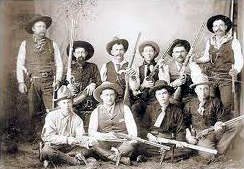 We all know that, as a country, we’re going through some tough times. As the old saying goes, “Tough times don’t last, tough people do.” And our being tough people is a part of what has made the Unites States the greatest nation on the face of God’s earth.
We all know that, as a country, we’re going through some tough times. As the old saying goes, “Tough times don’t last, tough people do.” And our being tough people is a part of what has made the Unites States the greatest nation on the face of God’s earth.
Some 400 years ago the Pilgrims came to our east coast. For the next 300 years we were a frontier country. In order to survive on that frontier it required hard work, creativity, self-reliance, accountability and cooperation with neighbors. In short, it took people of character.
It has been over a hundred years since our last frontier. And we as a people are loosing those frontier characteristics. We believe this loss of character could very well be the reason we’re having tough times.
For over eleven years, through our monthly 1800’s newspaper, two syndicated radio shows, syndicated newspaper column, book and three extensive web sites we’ve had the mission of “Educating people about the history of our American West in an entertaining way.”
Our objective has been not just to share history, but, in the process, emphasize those precepts that made us the great country we are today. They can be boiled down to three words: “Faith, Family, Freedom.”
Sunny and I have come to the realization that, in order to be truly effective, we need the resources of additional people. So, we’re in the process of forming the “Chronicle of the Old West Frontier Battalion.” Traditionally a Frontier Battalion was organized and sent out to deal with problems in times of emergencies.
We’re looking for people who feel as we do that personal ethics and responsibility are important for a person to live a fulfilled life, and for the United States to remain the great country it has become.
We have no political or religious affiliation. This isn’t a Republican – Democrat or conservative – liberal thing. It’s an American thing.
The Frontier Battalion will be comprised of people who are actively using their skills in a profession and those who have retired with years of experience to share.
Presently we’re using print, radio, TV and Internet to educate people. We want to supercharge what we’re doing and expand the message.
If you’re interested in assuring today’s children and future children the great life we’re experiencing, give me a call at 928/532-2875 or email me at Dakota@RavenHeart.com and tell us how you would like to help.
DOC HOLLIDAY
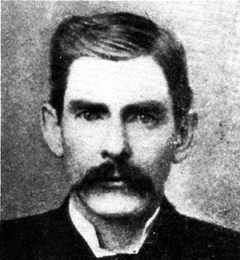 On November 8, 1887 Doc Holliday died from tuberculosis.
On November 8, 1887 Doc Holliday died from tuberculosis.
Born in Georgia, Holliday was raised in the tradition of the southern gentleman. He graduated from the Pennsylvania College of Dental Surgery in 1872. However, shortly after starting his career as a dentist in Atlanta, he developed a bad cough. Doctors diagnosed it as tuberculosis and advised him to move to a more arid climate. So, he moved to Dallas, Texas.
Even though Holliday was a good dentist, and had a successful practice, gambling interested him more than teeth, and he became a skilled poker and faro player.
About 1875, Holliday began drifting between the Wild West Boomtowns of Denver, Cheyenne, Deadwood, and Dodge City, making his living gambling and aggravating his tuberculosis with heavy drinking and late nights.
Although they were strange bedfellows, Holliday and Wyatt Earp were loyal friends. Following the O. K. Corral shootout, because of an arrest warrant, Holliday left Arizona and returned to the life of a western drifter, gambler, and gunslinger.
By 1887, his hard living had caught up to him, forcing him to seek treatment for his tuberculosis at a sanitarium in Glenwood Springs, Colorado. He died in his bed at the age of 36.
It’s interesting to note that although movies about Tombstone show Doc Holliday as being consumed with tuberculosis, in reality, as a result of Tombstone’s dry climate, he had little trouble with his tuberculosis.
BATTLE OF GONZALES
 The ever patient Texans could take no more when on October 2, 1835 Mexican soldiers attempted to disarm the people of Gonzales.
The ever patient Texans could take no more when on October 2, 1835 Mexican soldiers attempted to disarm the people of Gonzales.
Even though Texas had technically been a part of the Spanish empire since the 17th century, as late as the 1820s, there were only about 3,000 Spanish-Mexican settlers in Texas.
After winning its own independence from Spain in 1821, Mexico invited Anglo-Americans to come to Texas in the hopes they would be able to tame the Comanche Indians and the harsh land. During the next decade men like Stephen Austin brought more than 25,000 people to Texas, most of them Americans.
Even though these emigrants became Mexican citizens, they continued to speak English, and had closer trading ties to the United States than to Mexico.
In 1835, the president of Mexico, Antonio Lopez de Santa Anna, overthrew the constitution and appointed himself dictator. Recognizing that the “American” Texans were likely to use his rise to power as an excuse to secede, Santa Anna ordered the Mexican military to begin disarming the Texans whenever possible. This proved more difficult than expected, and on October 2, 1835, Mexican soldiers attempting to take a small cannon from the village of Gonzales encountered stiff resistance from a hastily assembled militia of Texans. After a brief fight, the Mexicans retreated and the Texans kept their cannon.
The determined Texans would continue to battle Santa Ana and his army for another year and a half before winning their independence and establishing the Republic of Texas.

